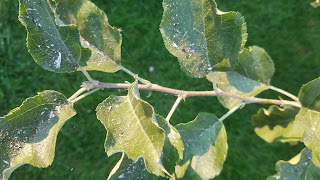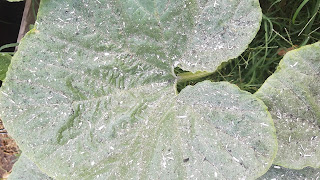By Carol O'Meara, CSU Extension Boulder County
Go outside and look at your car – see that dirty grey coating covering it? Fires in Colorado have been blanketing communities across the state with smoke and ash, with soot and fine particles falling hundreds of miles from the flames. The grey-and-white layer covers everything from cars, patio furniture, even plants.
Plants can withstand a bit of dirt and dust sitting on their leaves, but once the ashfall gets slightly thicker, it can interfere with photosynthesis, according to Dr. Mark Uchanski, Specialty Crops professor with Colorado State University. “ I do think it will interfere with normal photosynthesis due to the physical shading of small ash particles on the leaf surfaces. Some shading (e.g. tomatoes in a high tunnel) can be a good thing, but ash was not likely part of anybody’s gardening plans this summer."
"So I would suggest removal as long as it does not waste water,” noted Uchanski. Many residents in the foothills and mountains don’t have water to spare and some well permits don’t allow it for outdoor use. Do the best you can to get the coating off of leaves if it’s one-eighth inch or deeper; if it’s very bad and piling up towards one-quarter inch, the plants will be set back by the difficulty in having sunlight strike the leaves.
In your vegetable and perennial beds, without water, you could try fanning the plant vigorously. An added benefit of this technique will be entertaining your neighbors who stare as you move through the landscape waving air across your plants. Stay downwind with this technique or wear a mask so you don't breathe in the ash.





No comments:
Post a Comment